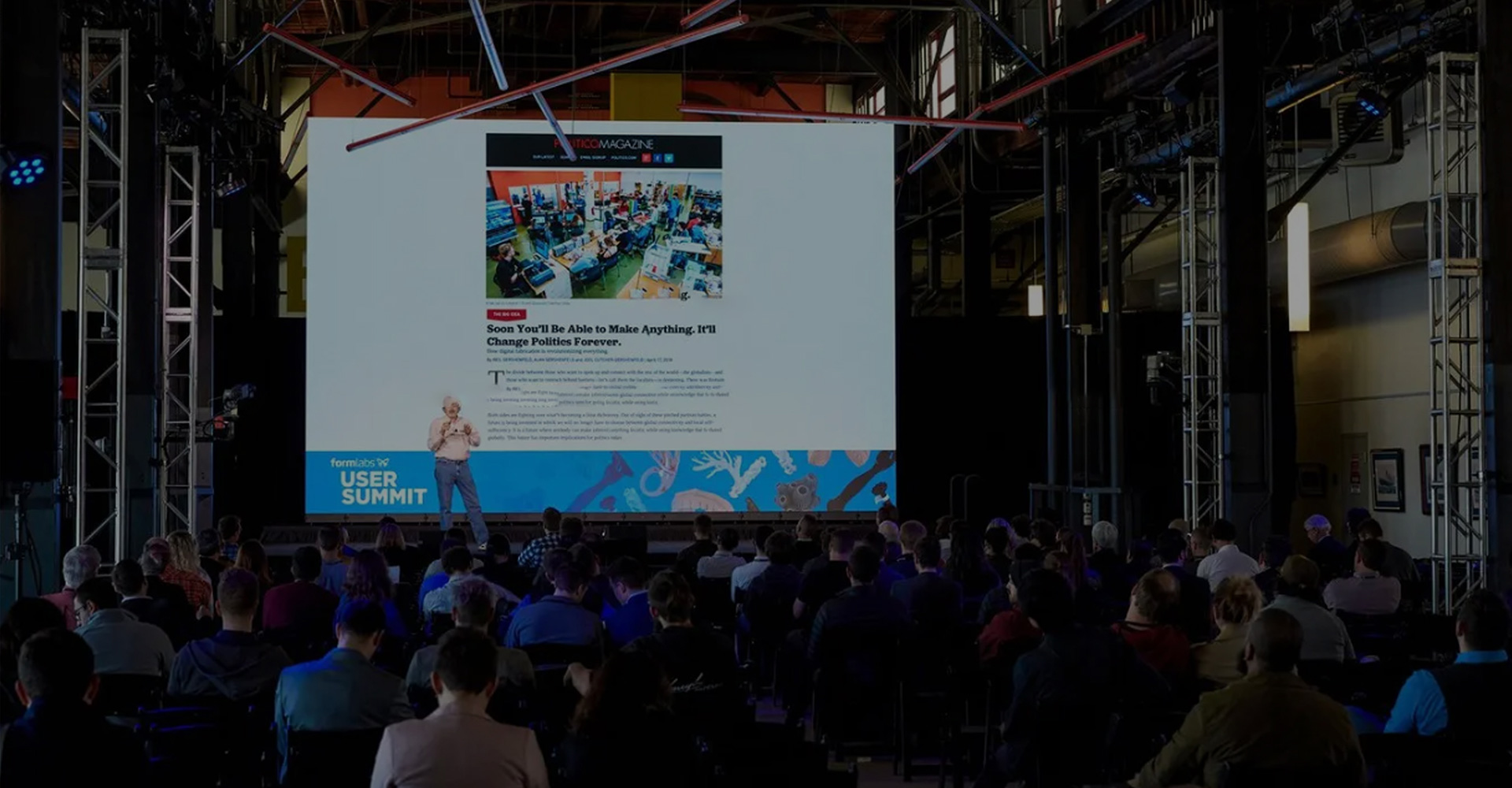
The ecosystem of new energy vehicles is open, changing and dynamic. The process and supply chain for the production of these parts have solidified during the typical three years it takes for a traditional car to arrive at the factory. At companies like Tesla, software is updated almost every month. The digital DNA is in the blood of the new car makers.
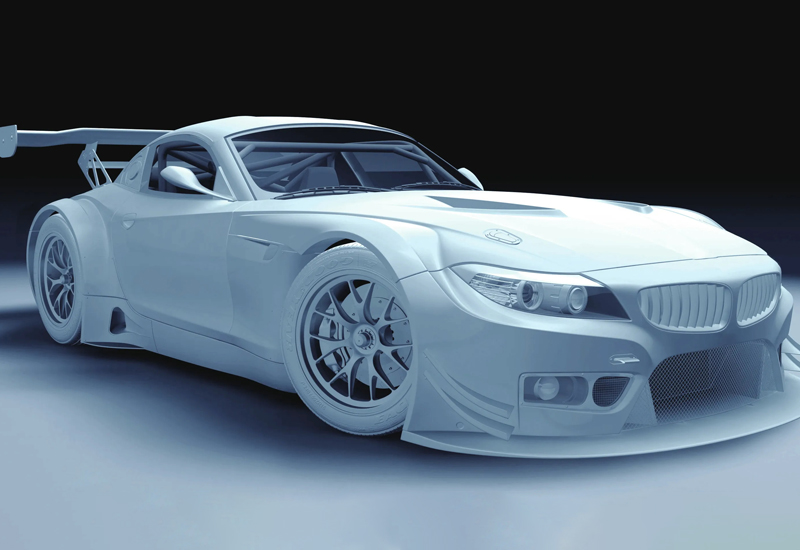
The digitisation enabled by 3D printing allows humans for the first time to generate a real economic net benefit threshold: a demand-oriented shift from overproduction to demand-driven production by synchronizing customer behaviour with producer behaviour.
3D printing is a technology with distinct digital characteristics, which means that additive manufacturing can change the production mode of products is essential. It can not only realize personalized, but also realize functional-oriented manufacturing, which makes 3D printing and new energy vehicles have a "natural fit" in terms of manufacturing genes.
Current technological development
According to ACAM Aachen Additive Manufacturing Center, ACAM Aachen's vision for additive manufacturing in multifunctional materials is an infinite combination of materials and technologies, and the ultimate goal is click-and-click production. The ACAM Aachen Centre defines the progressive process to achieve this vision as consisting of five gradients, Level 0 being the functional additive manufacturing process; Level 1 is a predictable additive manufacturing process; Level 2 is an automated additive manufacturing process; Level 3 is fully automated additive manufacturing (including pre-processing and post-processing); Level 4 is the combination of integrated and fully automated different manufacturing processes [1]. At present, the development of additive manufacturing in the world is still mostly at the Level of 0.
Automotive production requires a high degree of automation, high efficiency, low cost and quality consistency, which seems to be quite a "gap" with the current level of development of 3D printing. Therefore, the development status and future trend of 3D printing in automobile manufacturing need to be understood in combination with the characteristics of 3D printing technology.
On the one hand, 3D printing changes the logic of manufacturing, according to ACAM Aachen Additive Manufacturing Center. Generally, for the same product, the more quantity produced by traditional manufacturing technology, the cost per unit of the product will decrease. For additive manufacturing, cost per unit is independent of volume, which is a factor to consider when considering scalability. On the other hand, the complexity of the product. Usually, when parts are produced by traditional manufacturing techniques, the more complex the product and the higher the cost, the more expensive the enterprise needs to invest (including new molds and even new equipment to achieve it). For additive manufacturing, the complexity of a part is independent of the cost, and the complexity of the geometry of the part usually does not bring additional manufacturing costs.
In the case of cars, despite the trend towards smaller batches, the current juncture of 3D printing with cars is not that the correlation between cost and volume of 3D printing is an independent factor, but rather that 3D printing enables more complex products.
In terms of reducing the cost of parts in the field of metal 3D printing, indirect metal 3D printing technology, represented by binder injection metal 3D printing technology, has gained high attention in the industry with high speed and low cost. HP metal 3D printing technology adopted by the public is binder injection metal 3D printing technology.
Binder injection metal 3D printing technology, from the perspective of production efficiency, economy fully meet the application requirements of automobile for mass production. The rich variety of printable materials (from metal to ceramic, metal-metal composite materials, ceramic and metal composite materials, etc.) further extends the application scenario of binder jet metal 3D printing technology
In addition to aluminum and copper alloys used in automobiles, current steel materials suitable for binder metal 3D printing include: 17-4PH stainless steel, 304L stainless steel, 316L stainless steel, M2 tool steel, H13 tool steel, including 4140 stainless steel, 420 stainless steel, 4340 stainless steel, 4605 stainless steel and other materials under development [3].
In addition, 3D printing of plastic and carbon fiber composite materials has been developing rapidly, which has enriched the choice of automobile 3D printing technology.
Application cases of automobile enterprises
The automotive industry needs to take advantage of the specific advantages of 3D printing technology to improve product design, but one of the major challenges that needs to be overcome before 3D printing can be used in the production of specific automotive parts is economy. At present, most of the auto parts used in 3D printing are in small batches of a dozen or so, and to scale up to the 1 million units that the industry generally requires, 3D printing will have to break through economic barriers.
The following will introduce the latest application progress of 3D printing technology in Volkswagen, Ford, BMW and other enterprises, to explore the application status and development trend of 3D printing technology in the field of new energy vehicles.
Volkswagen announced plans in 2019 to use HP Metal 3D printing technology in Volkswagen vehicles, starting with mass customization and manufacturing of decorative parts, and integrating HP's HP Metal Jet metal 3D printed structural parts into the next generation of vehicles as soon as possible, with an eye toward increasing component sizes and technical requirements.
Vw aims to make 50,000 to 100,000 football-sized parts a year, which could range from gear shifters to rear-view mirror holders. Additive manufacturing is being deployed in the growing field of electric vehicle production because of its advantage in lightweight. Today, Volkswagen has set up the California Innovation and Engineering Center (IECC), launched a unique concept car that integrates 3D printing, and soon announced the production of 10,000 Metal parts on the HP Metal Jet with GKN and HP (see Figure 1). It was this milestone that paved the way for the continued partnership between VW and HP, and for the integration of VW's 3D-printed structural parts into its next generation of vehicles.
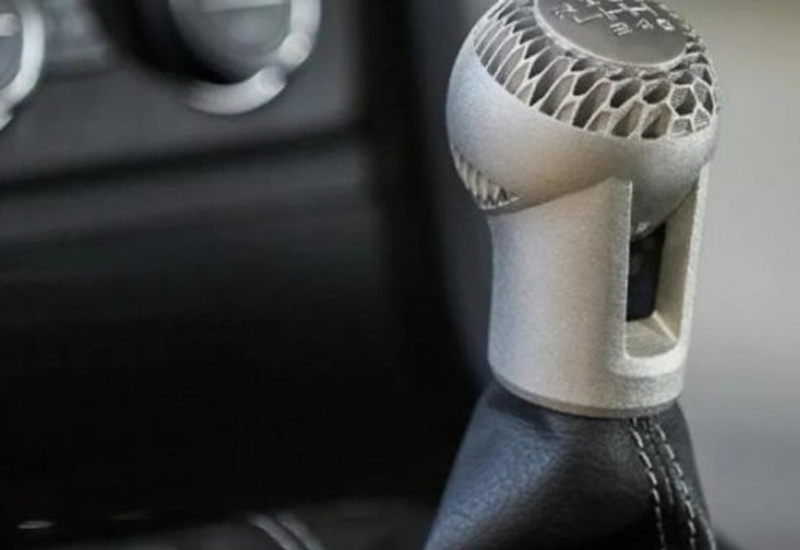
Figure 1 Auto parts produced by HP Metal Jet technology
Metal binder injection 3D printing technology will push 3D printing technology in mass manufacturing towards maturity, thus making the technology cost-effective. To take advantage of binder injection, VW is expanding its partnership with HP to deploy more capacity and bringing in Siemens to provide specialized software for the technology.
With Siemens' automation and software solutions, Volkswagen will be able to develop and produce components faster, more flexibly and using fewer resources. So far, the first batch of auto parts made using binder injection has been sent to VW's Osnabruck plant for certification. The part is used in the A-pillar of A Volkswagen T-Roc convertible, which weighs half as much as a conventional part made of steel.
Ford announced in 2021 that it planned to use 3D printing in large-scale vehicle manufacturing. Ford has had some success with 3D printing in the past, though only at lower volumes. But Ford's technology now goes well beyond low-volume 3D printing applications, and the parts it is developing will be used in full-scale production of Ford's "very popular models".
Ford's powder for binder injection metal 3D printing is Al6061, and the implications of successfully applying aluminum to 3D printing production of automotive parts are significant: the shift from traditional manufacturing processes to 3D printing processes will reduce weight, save space, improve component performance, and save cost and time by simplifying design.
For the next generation of 3D printing electric motors, Ford has also started a research project in alliance with ThyssenKrupp and RWTH Aachen University to develop flexible and sustainable production processes for the next generation of electric vehicles. Currently, the name of the project under development is HaPiPro2, which refers to the hairpin technology. Hairpin winding is a new technology in the field of motor, rectangular copper rod instead of winding copper wire. The process is easier to automate than traditional wire-wound motors and is particularly popular in the automotive sector because it can greatly reduce manufacturing time.
The development of stator windings for electric vehicles is usually a well-known bottleneck. The classical circular winding has many limitations: the copper conductor, winding process and slot geometry must be matched; The conductors wound around each other to form a firm pattern; In addition, circular wires (the classic conductor shape) do not fit geometrically well with trapezoidal grooves, resulting in each groove being half-filled with copper, creating voids. A relatively small cross section of the conductor ensures a large electrothermal loss.
3D printing avoids this development barrier almost without the need for molds. Because traditional production involves complex bending and welding processes, the time savings offered by 3D printing, especially in so-called hairpin windings, have paid off.
To make copper fill rate higher, 3D printing has a unique advantage in this respect. At present, L-PBF selective laser metal melting 3D printing, as well as binder injection metal 3D printing, are the most important application technology in the market.
Through 3D printing of motor copper coil winding, the design idea of motor coil for more than one hundred years is changed. Traditional copper wire or copper sheet is difficult to show the best design in the narrow space of motor stator and rotor, but 3D printing will bring certain changes.
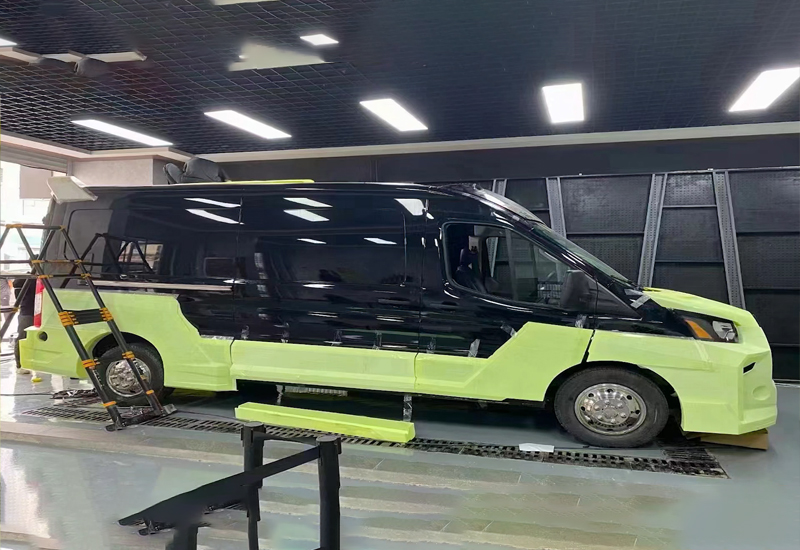
BMW
BMW held the launch meeting of the IDAM Joint Project in Munich in March 2019, with the aim of paving the way for the entry of additive manufacturing into vehicle series production. IDAM's goal is to promote "the industrialisation and digitisation of additive manufacturing (AM) technologies in the automotive sector". IDAM aims to build two pilot lines, one at GKN's Bonn plant and the other at BMW Group's Munich plant. The IDAM team advances additive manufacturing technology to meet specific requirements to produce parts of consistent quality as well as individual spare parts based on specific components. The goal is to use 3D printing technology to manufacture at least 50,000 mass-produced parts and more than 10,000 spare parts per year. The IDAM production line includes an open architecture that can be adapted to any LPBF system (selective laser metal melting 3D printing technology).
In 2020, BMW invested 15 million euros (over 100 million yuan) to open the 3D printing plant in Munich, which established the BMW Group's leading position in the field of additive manufacturing technology in the automotive industry.
With the support of the German IDAM program, BMW's 3D printing plant in Munich also houses modular and almost fully automated 3D printing production lines. The production line covers the entire process from digital design to 3D printing and manufacturing of components to post-processing. Due to the modular structure of the production line, it can be upgraded when necessary, so each module can adapt to different production requirements, but also can flexibly control the process steps. By combining the requirements for integration into the automotive production line, the project partners reduced the manual portion of the process chain from the current approximately 35% to less than 5%. At the same time, the unit cost of 3D-printed metal parts has halved.
The above cases show that although many new designs have not yet entered the industrialization stage, they are still in the initial stage. However, if the manufacturing enterprises do not make preparations as soon as possible, carry out innovation of spare parts and prototypes, and start from the design of innovative thinking, then these enterprises will be overtaken by other enterprises and will soon find themselves at a competitive disadvantage.
Disruptive innovation potential
motor
In the field of new energy vehicles, it is worth paying special attention to the application potential of 3D printing technology in the field of motor.
According to the research of China Chamber of Commerce for Import and Export of Mechanical and Electrical Products, despite the multiple difficulties caused by the global epidemic in 2021, such as international shipping, sharp fluctuations in raw material prices, and power supply shortage, China's motor industry still shows strong industry resilience and vitality with a complete supply chain, huge capacity, efficiency and price advantages. The total export of electric motor products exceeded US $20 billion, a record high and remarkable achievements were made.
Under the global "net zero" goal, the motor industry to energy conservation, emission reduction, green development will be the only way. In 2021, the Ministry of Industry and Information Technology and the State Administration for Market Regulation jointly issued the Motor Energy Efficiency Improvement Plan (2021-2023), specifying that by 2023, the output of energy-efficient motors will reach 170 million kW, and the proportion of in-service energy-efficient motors will exceed 20%. Expanding the green supply of energy-saving motors, expanding the industry chain of energy-saving motors, accelerating the popularization and application of energy-saving motors, and promoting the intelligent and digital improvement of the motor system will be the focus of the "14th Five-Year Plan" period, among which the improvement of motor energy efficiency will be the general trend. In 2021, the main export category of motor products will still be small and medium-sized motors, while exports of large motors, micro motors and generator sets will all achieve double-digit growth year-on-year.
Whether in the industrial field or in the transportation field, the driving task of the future puts a high demand on the various components. On the one hand, it is often impossible to optimize geometry based on traditional manufacturing processes, resulting in a painful tradeoff between performance and efficiency. In a sense, the classical manufacturing process of motors has reached its limits. On the other hand, as additive manufacturing technology matures, additive manufacturing systems, although currently slower and less reliable than traditional manufacturing methods, will shine when producing parts with unconventional topological Optimization structures or small batch sizes. This opens up another winding road for the manufacture of electric motors.
The motors used in new energy vehicles include DC motor, induction motor, permanent magnet synchronous motor and switched reluctance motor. At present, permanent magnet synchronous motor system is becoming the mainstream motor of new energy vehicles. This kind of motor has the advantages of high power density, wide speed range and so on. In the future, the electric motor system of new energy vehicles is developing towards permanent magnetization, digitalization and integration.
Currently, motor development teams around the world have shifted a great deal of effort to integrate additive manufacturing systems into the motor production cycle to implement more powerful and efficient topology optimization of the next generation of motors. According to the results of 3D Science Valley's market research, 3D-printed motors seem to be only a matter of time. It is predicted that 3D printing of prototype topologically optimized motor components will increase dramatically in the next few years, most likely focusing on 3D printing of motor windings, heat exchanger and synchronous rotor.
Compared with 3D printing motor windings, the current additive manufacturing technology of permanent magnets is still in the immature stage, and the main limitations are reflected in the low power density and limited magnetization ability. At present, the technology maturity of 3D printed soft magnetic steel is between the first two. On the one hand, it shows similar DC magnetism as traditional non-oriented steel. On the other hand, high eddy current losses exist in AC applications.
To date, 3D-printed permanent magnet samples exhibit relatively high coercivity: 700 ~ 800kJ/m in most studies. This can be attributed to the limited particle structure and high structural impurity content inherent in additive manufacturing materials. Other than NdFeB, 3D printing of other hard magnetic compounds is less common, including some instances of ALNiCo, SmCo, and ferrite magnets [6].
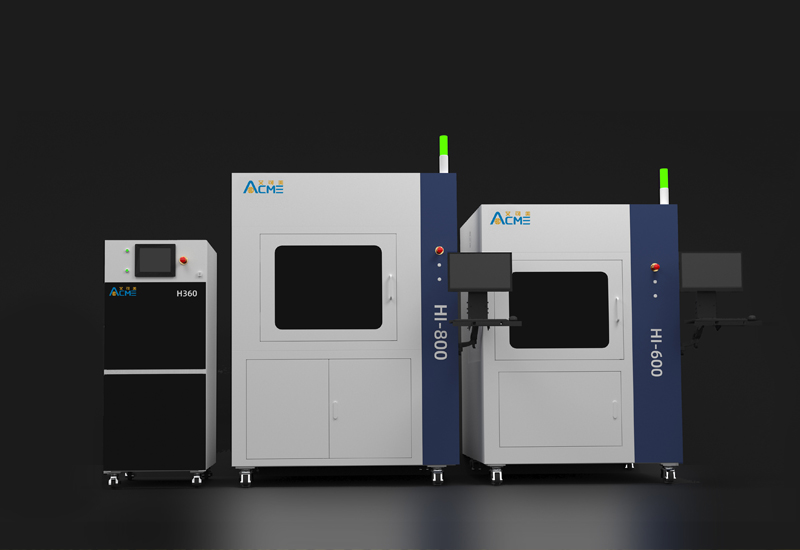
3D printing of permanent magnet samples presents two technical challenges.
1) The widespread use of extrudation-based additive manufacturing methods offers fewer opportunities to achieve complex component geometry. This is due to significant shrinkage and mechanical instability in the sintering process after 3D printing.
2) At the same time as printing complex shaped permanent magnets, a magnetization process must also be designed in order to impart the necessary three-dimensional magnetization patterns on the material. Ideally, this process would take place in 3D printing, but there are numerous technical challenges because of the strong magnetic fields involved.
The development of new materials and their industrial integration through next-generation production methods have had the most significant impact on the overall performance of the motor. Current materials exhibit limited electromagnetic properties. The saturation flux density of magnetic materials and the conductivity of winding materials have remained constant over the past century. Fortunately, possible solutions to the stalled development of motors have been proposed in new 3D printing technologies. Additive manufacturing can create a new motor design idea from a new Angle, especially applying topological optimization to the motor parts design.
Additive manufacturing will introduce a whole new set of design rules into motor design, because the cost of additive manufacturing is independent of batch size and the complexity of product design, which means more opportunities for electromagnetic and thermal optimization of the motor, because the flux path and conductor can be shaped in three dimensions according to the design requirements. And more efficient passive or active heat exchangers are integrated into the design.
It is worth noting that in addition to directly adopting 3D printing technology to manufacture motor parts, the mode of 3D printing casting mold + casting can also be adopted to give full play to the value of 3D printing to achieve more complex designs. The advantage of 3D sand printing is that highly complex parts can be designed without having to prepare expensive molds from scratch. In addition, as additive manufacturing offers unique design possibilities, entirely new designs are emerging. For 3D-printed sand applications, additive manufacturing allows the end user to thoroughly inspect and extensively test newly designed components prior to manufacturing the mold, saving significant upfront die opening time and expense.
The main challenges of 3D printing motors relate to the application limitations of 3D printing equipment systems and the technical requirements of producing the motors. The 3D-printed motor parts must meet strict tolerance requirements. The materials involved in the motor are conductive diamagnetic materials used in windings, soft ferromagnetic materials, etc.
For the additive manufacturing of conductive materials in the field of motors, the preferred research material is high purity copper. In addition, several aluminum alloys (mainly AlSi10Mg) and copper alloys (CuCrZr, CuNiSi, Cu10Zn, CuCr, CuSn0.3) have been used in the study, but at the cost of slightly lower conductivity.
Neodymium-based alloys are the most studied 3D-printed hard magnetic materials, among which NdFeb-based permanent magnet alloys (PM) have attracted much attention, possibly due to their high magnetic crystal anisotropy and unusually high magnetic moments of lanthanide atoms (e.g. Sm, Nd), which means that even when the filling factor of the hard magnetic phase in the magnet is relatively low, Higher power density can also be achieved. There are other common hard magnetic materials, including 3D-printed AlNiCo and SmCo.
Several trends are emerging in cutting-edge research to promote 3D printing for new electric drives. The first is exemplified by Ford's collaboration with RWTH Aachen University to develop flexible and sustainable 3D-printed motor parts, with a focus on copper; A good example of the second trend is the production of new motor parts by Fraunhofer IFAM or exone through more economical printing methods, with a focus on screen printing or binder jet metal 3D printing; The third trend is exemplified by the work of MTC, a UK manufacturing technology centre, on fully 3D-printed electric motors, with a focus on product redesign. The fourth trend is exemplified by Porsche's Connactive project with GKN, which focuses on the combination of new materials and designs.
For additive manufacturing of electromagnetic materials, four types of 3D printing systems are most commonly used, including powder bed melted metal 3D printing systems (electron beam EB-PBF and laser L-PBF melting), binder jet metal 3D printing, Directed Energy deposition (DED) metal 3D printing, and various similar extrude-based methods. The most common is melt deposition modeling (FDM).
The combination of increasingly reliable insulation materials, more efficient electrical and magnetic conductors, new permanent magnet alloys, and cost-effective manufacturing and processing methods has made motor designs more powerful and complex available to the end consumer.
If the importance of electric motors to new energy vehicles is equivalent to the importance of engines to fuel vehicles, then the importance of batteries to new energy vehicles is equivalent to gasoline. Undoubtedly, another noteworthy application of 3D printing in the field of new energy vehicle manufacturing is 3D printed batteries.
battery
Recent advances in 3D-printed batteries point to the possibility of cheaper, more energy-dense batteries in the future that can be customized for application and shape.
The idea of A 3D-printed battery is not entirely new, it was actually proposed in 2013 by a team led by Jennifer A. Lewis at Harvard University. They created a custom printer and special anode and cathode inks to produce the lithium-ion battery, but it's only about the size of a grain of sand.
The development of 3D printed battery technology so far has not only differed in the "big picture", but also on the smallest micron and nano scale. At the nanoscale, 3D printing has had a big impact on the structure of the battery electrodes, which is why the energy density has increased. "Porous" electrodes have long been able to increase energy density, and additive manufacturing is well suited to the process, meaning that the material in the electrodes can be constructed into a three-dimensional lattice lattice structure.
Lattice structures can provide channels for efficient transfer of electrolytes within the material. In the case of lithium-ion batteries, electrodes with a porous structure can lead to higher charging capacity. This structure allows lithium to penetrate the electrode volume, resulting in very high electrode utilization and thus higher energy storage capacity. In ordinary batteries, 30 to 50 percent of the total electrode volume is unused, which is overcome by using 3D printing. In addition, by creating a microlattice electrode structure, which allows for efficient transmission of lithium across the entire electrode, this also improves battery charging rates. Lattice lattices mean that the electrodes have more surface area to expose, leading to more efficient batteries.
The Blackstone 3D printing process currently on the market offers clear advantages, including significant cost reductions, increased production flexibility in battery sizes, and a 20% increase in energy density. 3D printing enables battery architectures to realize complex geometric shapes, an important step toward geometrically optimized configurations for electrochemical energy storage. The researchers estimate that the technology could be available for industrial use within two to three years.
+86 19958086067
sales@3dacme.com